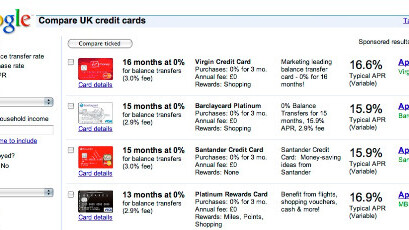
 Today was a very important day in the land of Microsoft with the unveiling of Silverlight 5 in all its glory and features. If you missed our coverage of its announcement, give the post a read, we are not going to be rehashing every new capability in this post. You need to catch up.
Today was a very important day in the land of Microsoft with the unveiling of Silverlight 5 in all its glory and features. If you missed our coverage of its announcement, give the post a read, we are not going to be rehashing every new capability in this post. You need to catch up.
As you well know, there is quite a hubbub in the Microsoft developer community over the future of Silverlight. Microsoft roiled the waves this past PDC when it failed to give any real face time to Silverlight, instead touting the future of HTML 5 for cross-platform capabilities. For the hundreds of thousands of developers who had invested time and energy into Silverlight development and training it was not welcome news.
A firestorm ensued, and ever since Microsoft has been playing defence over the issue. With today’s announcement, and some correspondence that we had with Microsoft today via email, we feel that we have a good finger on the pulse of what Microsoft has planned for both HTML 5 and Silverlight 5.
Before we get to that, let’s back up to what Microsoft said in October, when the fireworks really kicked off, via Mary Jo Foley:
“Silverlight is our development platform for Windows Phone,” [Microsoft] said. Silverlight also has some “sweet spots” in media and line-of-business applications, [Microsoft] said.
But when it comes to touting Silverlight as Microsoft’s vehicle for delivering a cross-platform runtime, “our strategy has shifted,” [Microsoft told MJF].
Microsoft instead planned to use HTML 5 for its cross-platform strategy. Let’s fast forward to today with new Silverlight 5 beta coming in the first half of 2011, and the final in the second. In their PR push this morning, Microsoft described the new Silverlight in the following fashion:
Silverlight 5 will add more than 40 new features to the technology that already enables more than 600,000 developers to create premium media experiences and rich applications across desktops, browsers, and devices. Building on the strengths of Silverlight 4, Silverlight 5 further advances capabilities in the areas of premium media experiences and business applications
The company then went on to highlight two separate capabilities: ‘Premium media experiences,’ and ‘Business applications.’ Do note that those areas were mentioned in October as well, giving them constant focus from Redmond. If you look, the browser capabilities of Silverlight are being downplayed. This brings us to our thesis: Microsoft is going to slowly push Silverlight into two general areas for the short-term: mobile and Xbox related development (already in place for mobile, Xbox on the way), and enterprise applications, leaving everything else to HTML 5. We pinged Microsoft with a note along those lines, and the company provided us with the following statement:
“HTML 5 will provide the broadest, cross-platform reach across many devices, and Microsoft will build the world’s best implementation of HTML 5 for devices running Windows. Microsoft will continue to extend browser scenarios with additional capabilities through Silverlight, providing the richest media streaming capabilities on the web, on both Windows and Mac and is Microsoft’s platform for building modern business apps that are rich and easy to deploy.”
This confirms our guess, but changes something slightly. Yes, Silverlight is going to used to build business applications as a focus, but it will remain somewhat useful for creating add-ons for browser environments. We did not anticipate that.
Then again, when you contemplate how young HTML 5 really is, it seems very plausible that Microsoft is intending on using Silverlight to “extend browser scenarios with additional capabilities” until HTML 5 can handle what they need.
Another factor that must be considered is the opening of Windows Phone 7 development to Visual Basic, something that Microsoft claims will double the potential developer pool for the platform. Does that mean that Silverlight has a possibly short life as the preeminent method for mobile coding for Microsoft products? It’s not too idle a question. Taking all of that in stride, the only areas where Microsoft seems to have heavily slotted Silverlight are business applications and media delivery, two things that it is heavily pushing via new features in Silverlight 5.
Sure, Silverlight is not dead, but it sure looks different than it used to. What are your views on the matter? And please, if you are a Silverlight partisan looking to get into a fight in the comments, please spare us all.
Get the TNW newsletter
Get the most important tech news in your inbox each week.




